ACTIVITY DESCRIPTION:
January 2019
ID: P4
PARALLEL STAGE: Posters for cultural events are used as examples to help pupils understand how artwork can be combined with text to yield a concise, impactful message. Subsequently, pupils design their own posters, on one of the four areas of cultural heritage defined by the European Year of Cultural Heritage: tangible, intangible, natural, and digital. A digital learning component is added by teaching pupils how to overlay text on scanned copies of their artwork.
INTERACTION STAGE: Posters from all countries are combined into a digital booklet and shared between partners. Teachers facilitate discussions on what other countries’ posters represent and what connections can be drawn between them.
FOLLOW-UP: Selected posters are printed and displayed at each school. The digital booklet is shared on TwinSpace, the project’s blog, and all schools’ websites.
PROJECT POSTERS FROM SPAIN
Each grade was divided into four groups. Depending on the grade, The Erasmus Comission decided to give up a different topic, there were four of them:
FOURTH GRADE: food
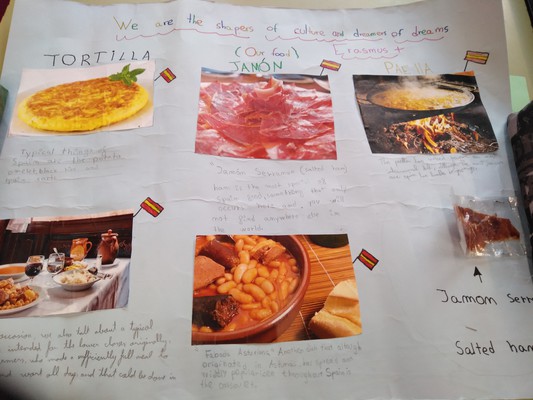


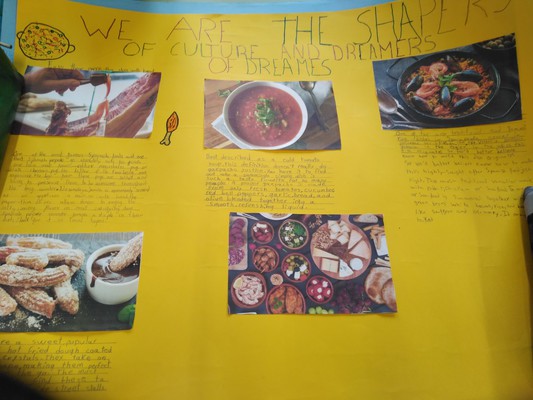
CLOTHES ( Typical dresses, Regional Dresses)


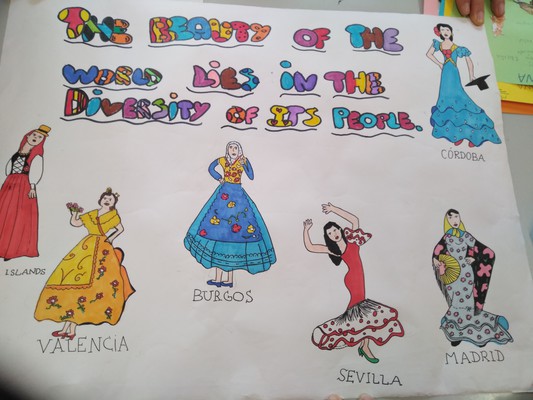
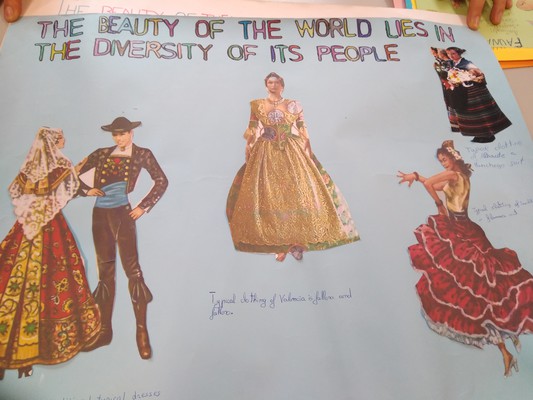
FESTIVALS AND MONUMENT:
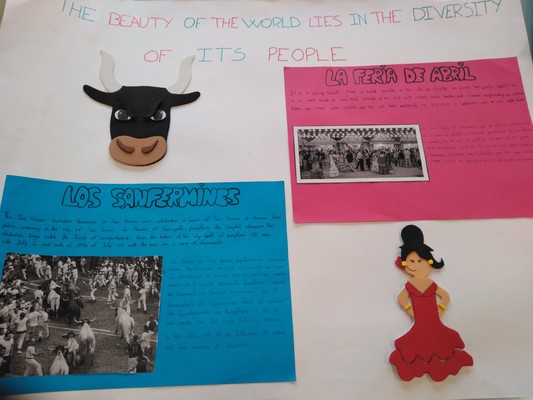
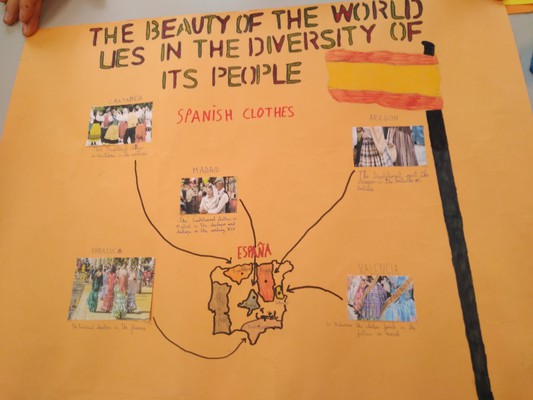
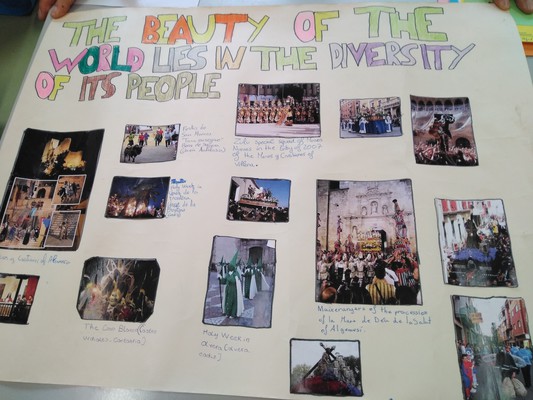
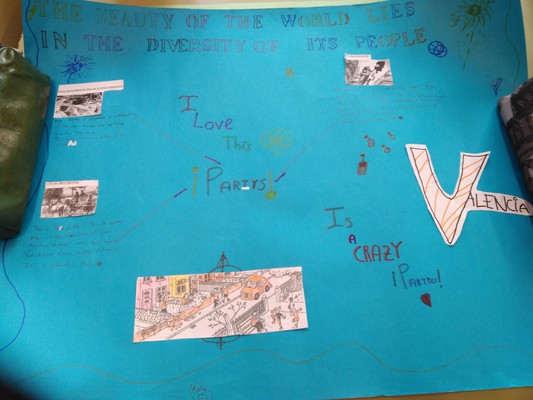
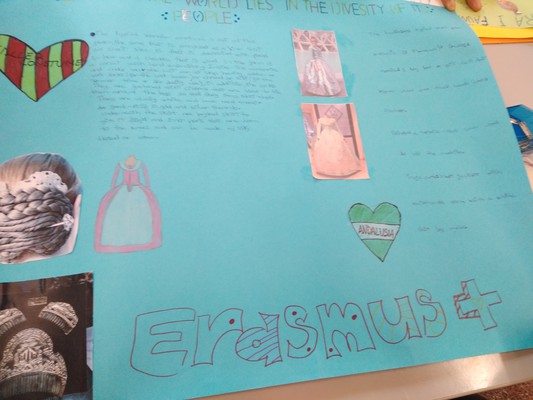
These projects were done as a cooperative work in Arts and some of English classes. The students brought the materials from home ( cardboard, information, pìctures, drawings...) and the started to work.
PROJECT POSTERS FROM CYPRUS
Fourth grade students worked on Project posters in Cyprus. Students created wthie work in their Art classes and then learnt how to use the Paint 3D software in their IT classes to add text and modify their work.
PROJECT POSTERS FROM POLAND
Fourth grade students worked on Project posters in Poland. Students created their work using postermy wall application during the ICT, Arts classes and eTwinning club. They combined ICT with their own artworks.